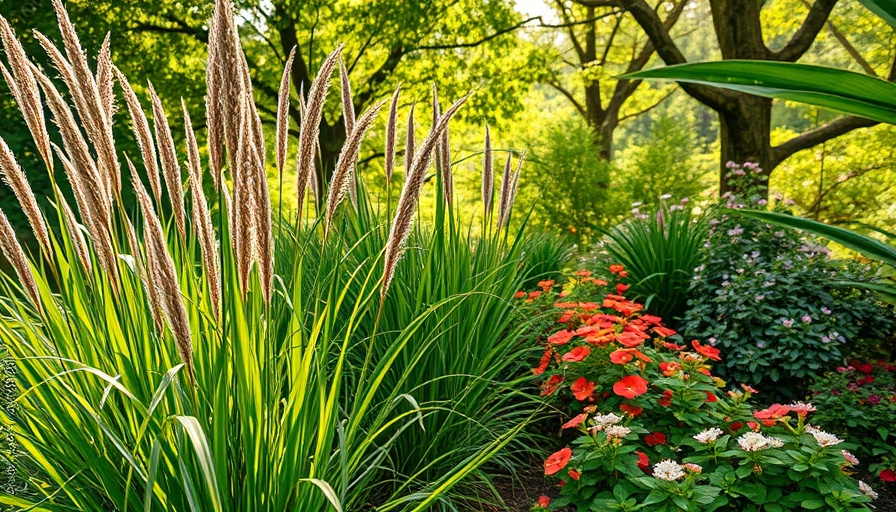
Transform Your Garden: The Allure of Ornamental Grasses
For homeowners and gardening enthusiasts alike, the appeal of ornamental grasses has surged in recent years, moving from a fleeting trend to a must-have feature in landscapes. These versatile plants offer not only aesthetic charm but also functional benefits, making them ideal for borders in any garden size. As you explore the world of ornamental grasses, it’s time to discover how they can elevate your outdoor space with light, movement, and texture.
Choosing the Right Grasses for Your Landscape
When it comes to ornamental grasses, the options are abundant. Each variety brings unique characteristics that can complement various garden styles and needs. For those looking to introduce some flair to their borders, consider the following standout choices:
- Golden Oat Grass (Stipa gigantea): A striking option that thrives with minimal care, it’s perfect for creating soft, ethereal qualities in any garden scheme. Its tall, feathery stalks shine when backlit by the sun, enhancing the overall ambiance.
- Feather Reed Grass (Calamagrostis ‘Karl Foerster’): Revered by landscaping professionals, this grass’s vertical growth pattern serves as a natural divider or punctuation mark amid your flower beds. It’s particularly effective for adding structure to your borders.
- Chinese Silver Grass (Miscanthus Yakushima Dwarf): This grass can be used as a standalone feature or mass-planted for a striking hedge. Its graceful movement captures the essence of natural beauty.
- Pheasant's Tail Grass (Anemanthele lessoniana): Ideal for those with drier gardens, this variety offers resilience and adds warmth with its autumn tones.
- Japanese Forest Grass (Hakonechloa macra): An excellent choice for partially shaded areas, this grass provides a charming soft texture and vibrant foliage.
The Functional Benefits of Ornamental Grasses
Incorporating ornamental grasses into your garden design isn’t just about the aesthetics; these plants provide critical ecological benefits. They support biodiversity, promote healthy soil, and can deter pests, making them a practical choice for sustainable gardening. Additionally, their robust nature means they are often drought-resistant, reducing the need for excessive watering and promoting a greener environment.
Cultivating with Care: Maintenance Tips
Despite their reputation for being low-maintenance, ornamental grasses do require some care for optimal growth. Regular pruning in early spring can rejuvenate your plants and improve their structure. Additionally, understanding the specific sunlight and soil moisture needs of each grass type will help you create a thriving garden.
Methods to Mix and Match
The beauty of ornamental grasses lies in their versatility and the dynamic relations they can create with other plants in your garden. For a visually stimulating design, integrate grasses with flowering perennials, contrasting textures that allow a natural synergy to evolve. This layering technique not only elevates aesthetics but also encourages a layered sanctuary for local wildlife.
Future Trends: Landscape Design Evolution
As gardening trends evolve, ornamental grasses are likely to continue playing a vital role in landscape architecture. Their ability to blend seamlessly into both modern and traditional designs highlights their enduring appeal among homeowners. Looking ahead, expect to see designers incorporating increasingly diverse grass varieties, fostering a richer tapestry of color and movement in outdoor spaces.
Taking Action: Enhance Your Outdoor Experience
Ready to elevate your garden with ornamental grasses? Start by visiting your local garden center and discovering the varieties that thrive in your climate zone. Whether you’re aiming for a dramatic focal point or a subtle backdrop, these grasses are sure to transform your garden into an inviting oasis.
For those eager to enrich their gardening experience with insightful tips, valuable design ideas, and expert advice, sign up for our newsletter and stay in the know about the latest trends in ornamental plants!
 Add Row
Add Row  Add
Add 




Write A Comment